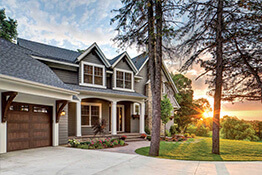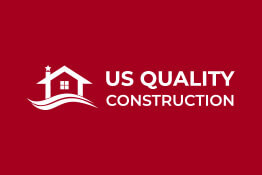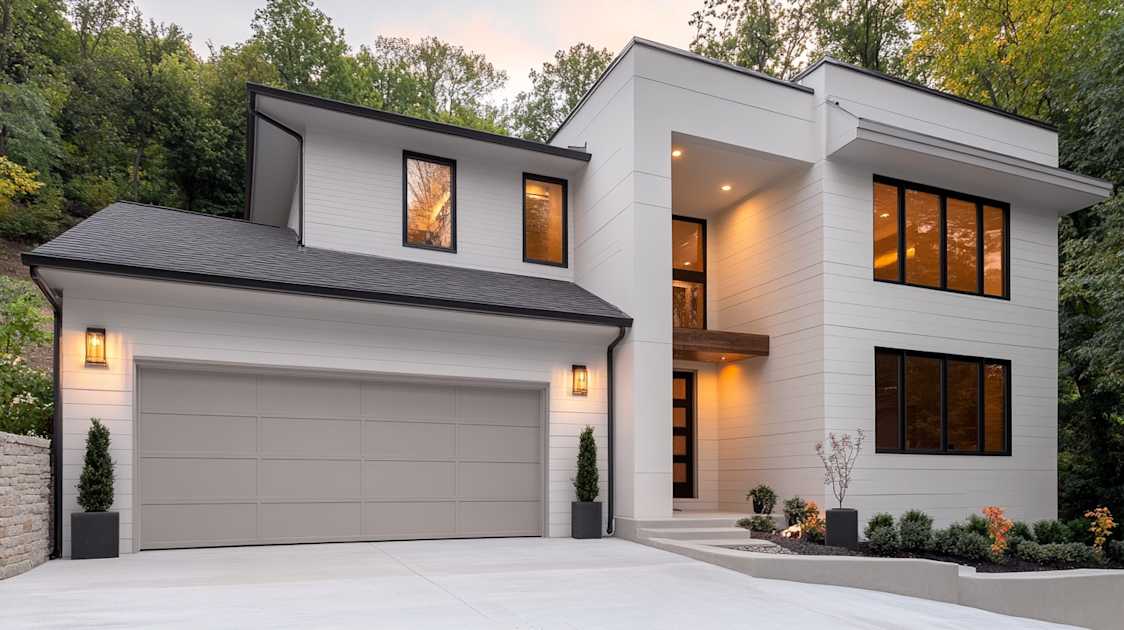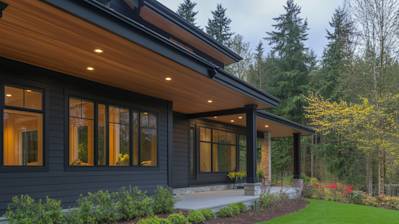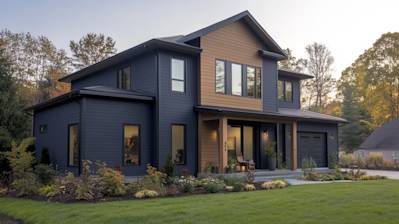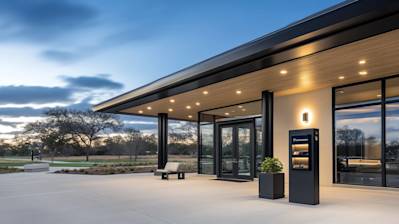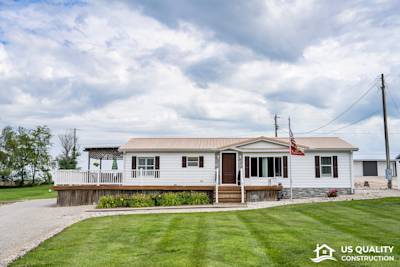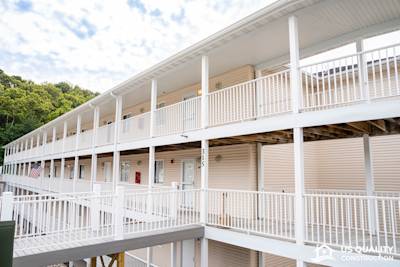It hardly matters whether you're constructing a new house or renovating an existing one: the importance of selecting the perfect architectural siding cannot be overstated. Architectural siding is a critical element that shapes the overall aesthetics of a building, while simultaneously enhancing its durability.
For those seeking an in-depth knowledge about this crucial construction element, this comprehensive guide is just what you need. We're aiming to provide a clear understanding of what architectural siding is, its importance, and the different types available in the market.
Understanding Architectural Siding: The Basics
First, let's make sure we're on the same page about what architectural siding is. Architectural siding, also known as house siding, is the protective material attached to the exterior of a house or building. It is a primary defender against harsh weather conditions, offers insulation, and most importantly, gives your home a defined look.
The Central Role of Architectural Siding
But why is architectural siding important to your construction or renovation project? There are several reasons.
- Protection: Siding forms the first line of defense against harsh elements such as strong winds, rain, snow, and extreme temperatures.
- Insulation: Quality siding material can provide thermal insulation, keeping the house warm in winters and cool in summers.
- Aesthetics: The right architectural siding can drastically enhance the aesthetic appeal of a building.
Popular Types of Architectural Siding
When it comes choosing the right architectural siding, the choices can be quite diverse ranging from materials to colors and finish. Here are some popular types:
Vinyl Siding
A long-standing favorite, vinyl siding is popular due to its durability, cost-effectiveness, and low maintenance needs. It has a broad range of color options and designs, making it easier for homeowners to match any architectural style.
Wood Siding
Wood siding offers a timeless, classic, and high-end appearance. Whether you opt for cedar, pine, spruce, or redwood, it instantly adds a natural and premium touch.
Fiber Cement Siding
This type of siding is a blend of wood fibers, cement, clay, and sand. It not only mimics the look of wood but also offers its durability and resistance to harsh weather.
Metal Siding
Metal siding, predominantly made from steel or aluminum, is an excellent choice for contemporary designs. It's known for its strength, and its resistance to pests and fire.
Selecting the Perfect Architectural Siding: Factors to Consider
Choosing the right architectural siding isn't as simple as picking a design that appeals to your eye. Here are some factors you should consider:
Cost: Establish a budget before examining different siding options. Some materials are more expensive upfront but require fewer maintenance costs down the line, such as fiber cement or metal siding. Weigh the initial and long-term costs.
Maintenance: Each siding requires different levels of care. For instance, wood siding requires more maintenance than vinyl siding. Consider how much time and resources you're willing to invest in maintenance.
Durability: Consider the local climate when choosing your siding. Different materials have different resistance levels to various weather conditions.
Aesthetics and architectural style: Naturally, you want your siding to align with your home's architectural style. A modern home may look best with metal siding, while a classic-style home might look better in wood or fiber cement siding.
Environmental impact: If sustainability is a concern, consider siding materials that have a minimal impact on the environment.
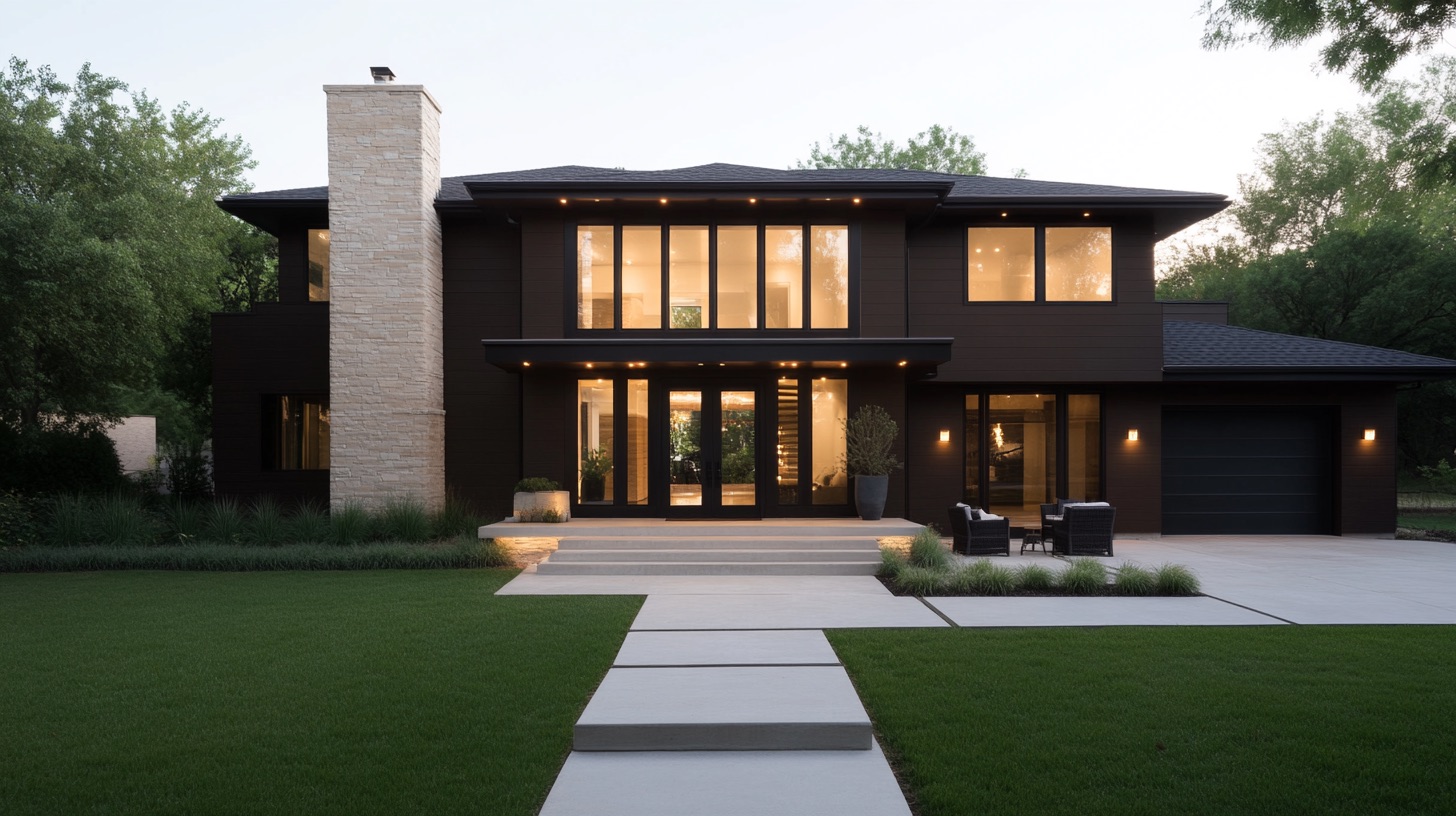
Frequently Asked Questions about Architectural Siding
How does architectural siding differ from regular siding?
The major difference between architectural siding and regular siding primarily lies in the aesthetics and design. Architectural siding is specially designed to mimic other finishes, offering a richer, more varied visual experience. It can have different colors, textures, and finishes, providing more architectural interest than regular siding.
How long does architectural siding typically last?
The lifespan of architectural siding can vary greatly, depending on the material used and the quality of installation. For instance, vinyl siding can last upwards of 20–30 years when properly maintained. However, fiber cement siding, brick, or stone options are known to last even longer, often a lifetime if they are well cared for.
Is it necessary to use architectural siding on modern design?
While it's not strictly necessary, many people choose architectural siding for modern designs because of the unique aesthetics it offers. Architectural siding can elevate the look of any design, modern or otherwise, adding interest and personality.
Can architectural siding help with insulation and energy efficiency?
Indeed, some types of architectural siding do offer insulating properties. For example, insulated vinyl siding can help support a building’s thermal insulation, reducing heating and cooling costs in the process.
Will I need to regularly maintain my architectural siding?
The need for frequent maintenance depends on the siding material you choose. For instance, natural wood siding requires regular maintenance – sealing, staining, or painting every few years. On the other hand, options like vinyl or fiber cement require minimum maintenance.
Can architectural siding withstand harsh weather conditions?
Architectural siding, especially when made from materials like brick, stone, or fiber cement, is specifically designed to survive harsh weather conditions. However, the longevity and condition of the siding will depend on the installation quality and maintenance provided.
What kind of look can I create with architectural siding?
The design possibilities with architectural siding are virtually limitless. You can achieve a traditional look with wood or brick siding, a modern or rustic look with metal, or a contemporary look with vinyl or fiber cement siding. Since architectural siding comes in many designs, textures, and colors, the design options are extensive.
Is architectural siding a cost-effective choice for my home?
Architectural siding can be cost-effective, but this depends on the material you choose and its longevity. Higher-end materials like stone, brick, or premium wood may have a steeper initial cost, but their longevity and durability could result in lower maintenance and replacement costs over time.
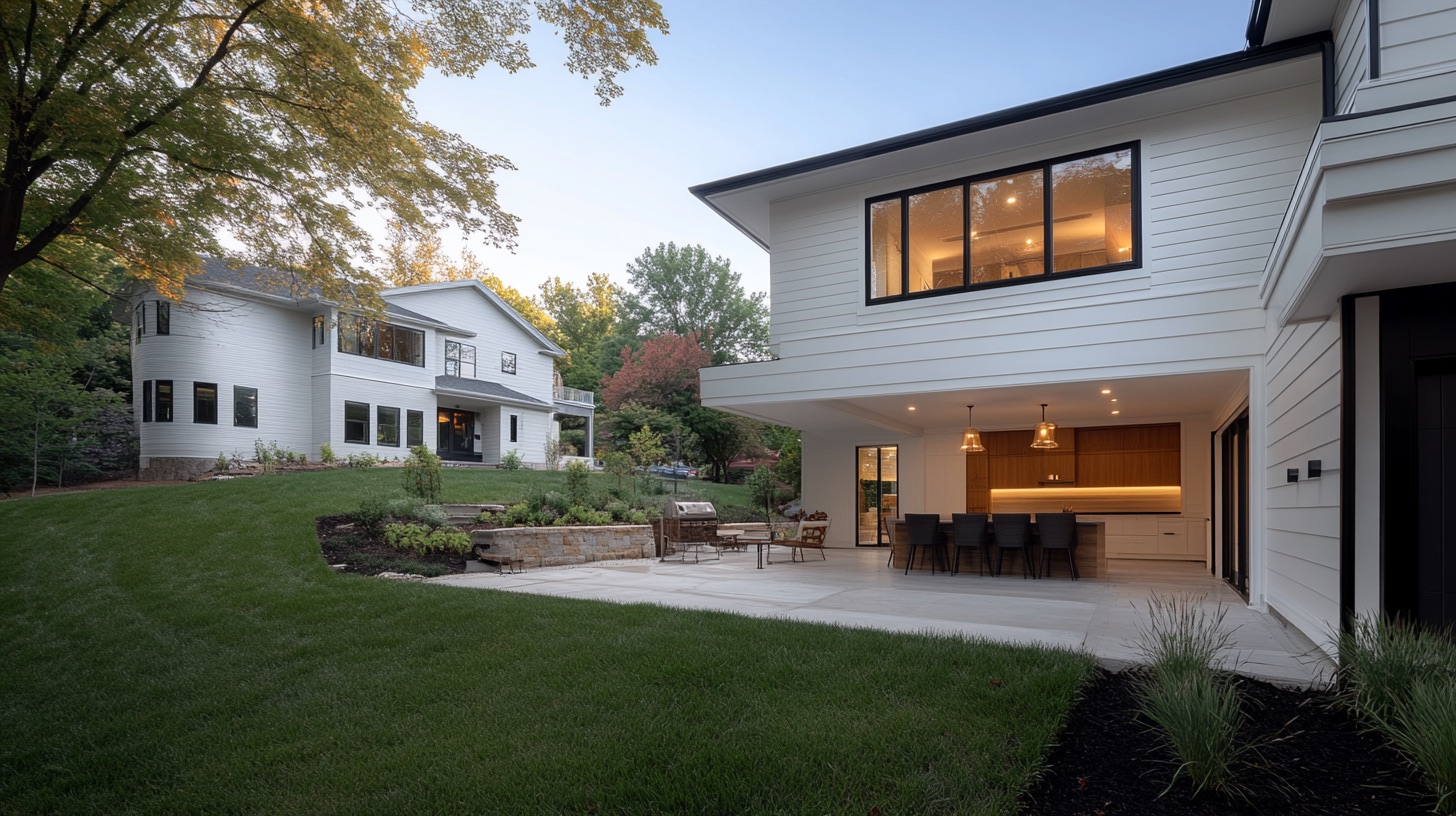
Pros of Architectural Siding
Variety of Options
One of the major advantages of architectural siding is that it is available in a variety of styles, colors, materials, and textures. Materials range from wood to vinyl, metal, fiber cement, and even stone veneer. This means that homeowners have the freedom to choose a siding option that fits perfectly with the architectural style of their home.
Durability and Longevity
Architectural siding, particularly those made of fiber cement or high-quality vinyl, is often resistant to common exterior threats like moisture, insects, and harsh weather conditions. They are designed to withstand years or even decades of exposure, making it a long-term investment.
Energy Efficiency
Certain types of architectural siding, such as insulated vinyl or fiber cement, can offer improved energy efficiency. They provide an added layer of insulation to the home which can reduce heat loss during the winter and keep the house cooler during the summer. Over time, this can result in significant savings on energy bills.
Enhances Curb Appeal and Property Value
Architectural siding can significantly enhance the curb appeal of a house. When installed and maintained properly, siding adds a fresh, clean look that can boost the property’s market value. When it comes time to sell, a house with attractive, durable siding may command a higher price.
Low Maintenance
Many kinds of architectural siding require minimal maintenance. In the case of vinyl siding, for example, occasional cleaning with a standard garden hose is usually enough to keep it in good shape. This makes it an ideal choice for homeowners who want a stylish but low-maintenance exterior for their properties.
Cons of Architectural Siding
Costs Can Be Higher
One of the main drawbacks of most architectural sidings is the initial installation cost. High-quality materials and energy-efficient options can be expensive. If professional installation is required, labor costs can also add to the total amount. However, considering the potential benefits and long-term savings, many homeowners find this to be a worthy investment.
Difficulty in Matching Replacement Siding
In the event that parts of the siding need to be replaced due to damage or wear and tear, it can be challenging to find an exact match, especially for unique hues or textures. Even within the same product line, slight color variance can occur between batches.
Potential for Incorrect Installation
Siding installation requires skill and experience. When not installed properly, it could lead to problems like warping, buckling, and moisture penetration, which could ultimately lead to more expensive repairs. That's why it's crucial to ensure that whoever installs your siding is fully qualified and experienced.
Not Suitable for All Architectural Styles
While there is a wide variety of available styles, not every type is suitable for all architectural styles. For instance, modern sidings may not look right on a classic Victorian house, while traditional wooden sidings may clash with the aesthetic of a contemporary design.
Environmental Considerations
Certain types of architectural siding are not very environmentally friendly. For instance, vinyl siding is made of polyvinyl chloride, which is not biodegradable and releases harmful chemicals when burned. Some homeowners might prefer eco-friendlier alternatives such as wood or fiber-cement.
Myths and Misconceptions about Architectural Siding
Architectural siding, like any other building product, isn't immune to misconceptions and myths floating around. Many homeowners, builders, and even architects fall victim to these common notions, affecting their decisions regarding architectural siding choice and maintenance. Let's delve in and shed light on some of the most common misconceptions about architectural siding.
Myth 1: All Siding Is Essentially the Same
Misconception: Siding Is Merely Cosmetic
Some think that siding is just an aesthetic element used to decorate the external side of a house. However, architectural siding serves several critical functions besides making a home look pleasing. It acts as a protective layer, shielding the house from harsh weather conditions, preventing moisture infiltration, and even dampening external noise.
Myth 2: Siding Never Requires Replacement
Misconception: Installed Siding Lasts a Lifetime
Although high-quality siding can last for several years, claiming it doesn't require replacement is misleading. Siding's longevity depends on several factors like the material used, the level of maintenance, and exposure to harsh climates. Regular inspection and timely repairs ensure that siding serves its purpose efficiently for a longer time.
Myth 3: All Siding Materials Are Equal
Misconception: Siding Material Doesn't Affect Durability and Maintenance
Various siding materials like vinyl, wood, metal, and fiber cement have different durability levels, maintenance requirements, and insulation capabilities. For instance, wood siding can be prone to insect infestation and requires frequent maintenance, while vinyl siding is relatively low maintenance but may not be as robust as other materials.
Myth 4: Painting and Staining Isn't Necessary for Siding
Misconception: Siding Doesn't Need Any Finishing
Some siding materials require staining or painting to increase their longevity and maintain their original appearance. Wood siding, for instance, needs regular staining to protect it from weathering and insect damage. So one shouldn't assume that once the siding is installed, it doesn't need any further treatment.
Myth 5: Installing Siding Is a DIY Job
Misconception: Siding Installation Can Be Easily Done by Homeowners
Although it may seem like an easy task, installing architectural siding requires precision and professional skills. An incorrectly installed siding can lead to numerous problems down the line, such as gaps and spaces for water seepage, growth of mold and mildew, and decreased energy efficiency of the home. Therefore, it is always advisable to hire professionals for siding installation.
Myth 6: Siding Is All About Looks
Misconception: Siding Doesn’t Improve Energy Efficiency
Some homeowners believe that siding only affects a house's aesthetic appeal and has no bearing on its energy efficiency. In reality, different siding materials have varying insulation capabilities, leading to better energy efficiency and lower utility bills.
Myth 7: Cleaning Isn’t Necessary for Siding
Misconception: Siding Doesn’t Accumulate Dirt or Debris
No matter how durable or high-quality your siding is, it is exposed to the outdoors continuously, making it prone to dirt, debris, and grime accumulation. Regular cleaning not only maintains the siding's look but also helps spot any damage early on, protecting your home's structural integrity.
By understanding the facts and debunking these myths about architectural siding, homeowners, builders, and architects can make more informed decisions concerning siding selection and maintenance, ensuring the longevity and aesthetic appeal of buildings.
Summary
So, you can see that architectural siding really does play a big role in setting the tone and style of a building. It's not just about looks, though, it's also about providing a protective shield against the elements, maintaining the structural integrity of the building over time. Whether it's made of wood, metal, or vinyl, the right siding can dramatically enhance a building's aesthetics and value.
When choosing architectural siding, it's important not to rush the decision. The right choice can elevate a building's appearance, increase its resale value, make it more energy efficient and reduce maintenance costs. From traditional claddings to modern styles, there's a wide variety of options available. So, take your time, consult with professionals, and choose the one that best fits your building and budget.
Alright, just a quick wrap up. Architectural siding may seem like a small detail, but it makes a big difference. It's an important part of the overall design, contributes to the building's character and can even dictate its overall lifespan. Whether you're designing an elegant residential home or a commercial building, the form and function of the siding shouldn't be overlooked. Live up to your vision and let your building shine with the best architectural siding.
About US Quality Construction
At US Quality Construction of Kansas City, MO, we're proud locals, serving our beloved community with peerless construction services. Once upon a time, we were just a small crew of construction enthusiasts. Today, we're a full-fledged company, turning blueprints into structures worth marveling. Across Kansas City, you'll find our handprints on various commercial and residential projects, each narrating a story of dedication, hard work, and our commitment to excellence. But don't let our growth fool you! We still hold the same values and personal touch that made us a community favorite in the first place. When you partner with us, expect quality, reliability, and a crew that feels like an extended part of your family. After all, that's the Kansas City spirit, and we live it every day.
Tags: building materials, home exterior, construction products,
